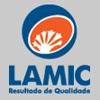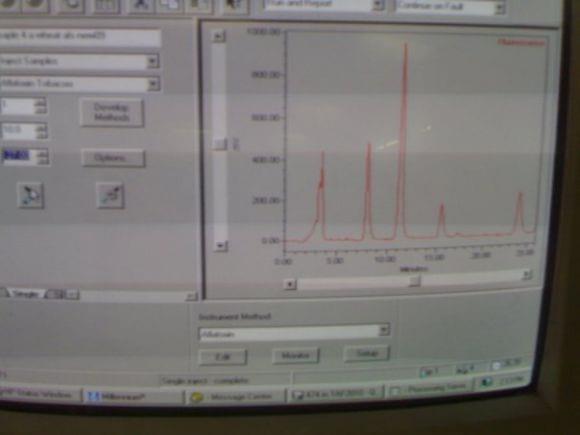Explore all the information on
Mycotoxins in feedstuffs
Welcome to the page about Mycotoxins in feedstuffs of Engormix; a source of knowledge on Mycotoxins in feedstuffs.
To deal with mycotoxin problems, there must first be an understanding of the fungi which produce them, their growth parameters and interactions with crops. Mycotoxin control is both fungus specific and crop specific. Control of mycotoxins during growing seasons is a crop management problem. Control during storage is a food technology consideration. Toxic fungal metabolites, known as mycotoxins, are chemically diverse and occur in a wide variety of substrates, including foodstuffs. Food...
Comments : 2
Recommendations: 0
INTRODUCTION It has been previously reported that severe contamination of grain and feed with zearalenone (ZEA) occurs in numerous areas of the world (Chaytor et al., 2011). The laggard harvest conditions of grain and the processing of edible oil significantly aggravated the contamination by fusarium in China, and the contamination levels of mycotoxins such as ZEA were much higher than those in other countries (Zhang et al., 1997). Pigs are the most sensitive species to...
Comments : 0
Recommendations: 0


Effects of DON and antidote on pro-inflammatory mRNA expression of broiler
Suggested link
...
Comments : 0
Recommendations: 0
The Fusarium head blight caused mostly by Fusarium graminearum (F.g.) is the most important disease of wheat because it not only leads to yield loss, but the toxin contamination makes the yield harvested. First, visual assessment of the heads was made, then the ratio of Fusarium damaged kernels (FDK) becomes the attention, and since the introduction of the toxin limits for wheat, the deoxynivalenol contamination has gained significance. However, the FDK has a...
Comments : 1
Recommendations: 2
23.8.2006 Official Journal of the European Union L 229/7 COMMISSION RECOMMENDATION of 17 August 2006 on the presence of deoxynivalenol, zearalenone, ochratoxin A, T-2 and HT-2 and fumonisins in products intended for animal feeding (Text with EEA relevance) (2006/576/EC) THE COMMISSION OF THE EUROPEAN COMMUNITIES, Having regard to the Treaty establishing the European Community, and in particular the second indent of Article 211...
Comments : 12
Recommendations: 0
INTRODUCTION Fumonisins are secondary metabolites of Fusarium verticilloides and were first isolated and chemically characterized in 1988 (Gelderblom et al. 1988). About 28 homologues have been discovered since then. However, from a toxicological standpoint, Fumonisin B 1 (FB) is the most common and studied homologue. Others, such as FB 2 , FB 3 , and FB 4 are less...
Comments : 0
Recommendations: 0


Effects of DON and antidote on pro-inflammatory mRNA expression of broiler
Suggested link
1. Introduction Mycotoxins are toxic fungal metabolites that can contaminate a wide array of food and feed [1]. Mycotoxin-producing fungi can be classified into either field or storage fungi. Field fungi, such as the Fusarium species, produce mycotoxins on the crops in the field, whereas storage fungi, such as the Aspergillus and Penicillium species, produce mycotoxins on...
Comments : 0
Recommendations: 1
1. Introduction Mycotoxins are toxic secondary metabolites produced by molds under favorable conditions, and they cause losses for farmers, reduce the value of contaminated feed and affect both animal health and productivity. The major problem associated with animal feed contaminated with mycotoxins is not acute disease episodes, but rather the ingestion of a low level of toxins which may cause an array of metabolic, physiologic, and immunologic disturbances [1]. Among...
Comments : 0
Recommendations: 0
Microscopic fungi are ubiquitous and have the ability to adapt to different habitat conditions. Some of them may develop products that are toxic to humans and animals, which are called mycotoxins (MT). This notion is due to their origin and effect in animals. From the point of the participation in metabolism of the fungi, they are referred to "secondary metabolites", i.e. substances that are formed during the metabolism, but do not play a role in their life. Not...
Comments : 0
Recommendations: 0
I. INTRODUCTION Rapid assessment of the quality of feed ingredients is now crucial for the financial success of intensive livestock producers. A great deal is known about the nutrient requirements, factors determining feed intake and the negative impacts of anti-nutritional factors for all intensively reared livestock including poultry. Diets formulated for optimum performance and profitability need to meet, but not...
Comments : 2
Recommendations: 0


Effects of DON and antidote on pro-inflammatory mRNA expression of broiler
Suggested link
Fusarium Head Blight is one of the most important fungal diseases of wheat and other cereals in the world and it´s caused mainly by fungal pathogens. In addition to this problem, these fungi produce mycotoxins, getting into food and feed. What are your experiences regarding management strategies? ...
Comments : 0
Recommendations: 0
Mycotoxins are toxic compounds produced by different types of fungus, belonging mainly to the Aspergillus, Penicillium and Fusarium genera. They commonly enter the food chain through contaminated food and feed crops, mainly cereals. Dr. Bruce Cottrill is an expert in animal nutrition and a member of the EFSA Panel on Contaminants in the Food Chain (CONTAM Panel). As a long-serving member of the Panel’s working groups on mycotoxins, Dr. Cottrill has been...
Comments : 5
Recommendations: 0
1. Introduction
According to the Fod and Agricultural Organization (FAO) of the United Nations, up to 25% of the world’s food crops have been estimated to be significantly contaminated with mycotoxins (WHO, 1999). Significant losses due to mycotoxins and their impact on human and animal health have been linked with national economic implications and all these factors have combined to make mycotoxins...
Comments : 0
Recommendations: 0


Effects of DON and antidote on pro-inflammatory mRNA expression of broiler
Suggested link
Introduction The prevention of FHB on the field becomes highly important. The toxin is typically of field origin. In the postharvest period and storage further increase of toxins may occur, but the field prevention is the key. The breeding approach becomes more important as there are now three regulations for toxin contamination for Fusarium toxins. The Commission Regulations, EC 856/2005 (2005) and EC 1126/2007 (2007)...
Comments : 0
Recommendations: 0
Plant Breeding 131, 1—19 (2012) doi:10.1111/j.1439-0523.2011.01936.x 2011 Blackwell Verlag GmbH Received February 17, 2011/Accepted November 7, 2011 Communicated by T. Miedaner Abstract Ear rots caused by different Fusarium spp. are one of the most dangerous food and feed safety challenges in maize...
Comments : 0
Recommendations: 0
Dr. Douglas Zaviezo Ph.D from Special Nutrients, speaks about Mycotoxin Analysis for Feed Raw Materials and its Control at Livestock Asia Expo and Forum 2013 in Malaysia. ...
Comments : 0
Recommendations: 0


Effects of DON and antidote on pro-inflammatory mRNA expression of broiler
Suggested link
Environ Health Perspect. 2013 September; 121 (9) : A270–A275.
...
Comments : 0
Recommendations: 0
Introduction Feed supply is important for animal production and any factor that affects the security of the feed supply is a significant constraint to production. Feed spoilage by moulds may result in heating, reduced palatability and the loss of nutritive value (Christensen, 1974). In addition, the affected commodity may become contaminated with mycotoxins. The biological reactions following ingestion of one or a...
Comments : 0
Recommendations: 0


















